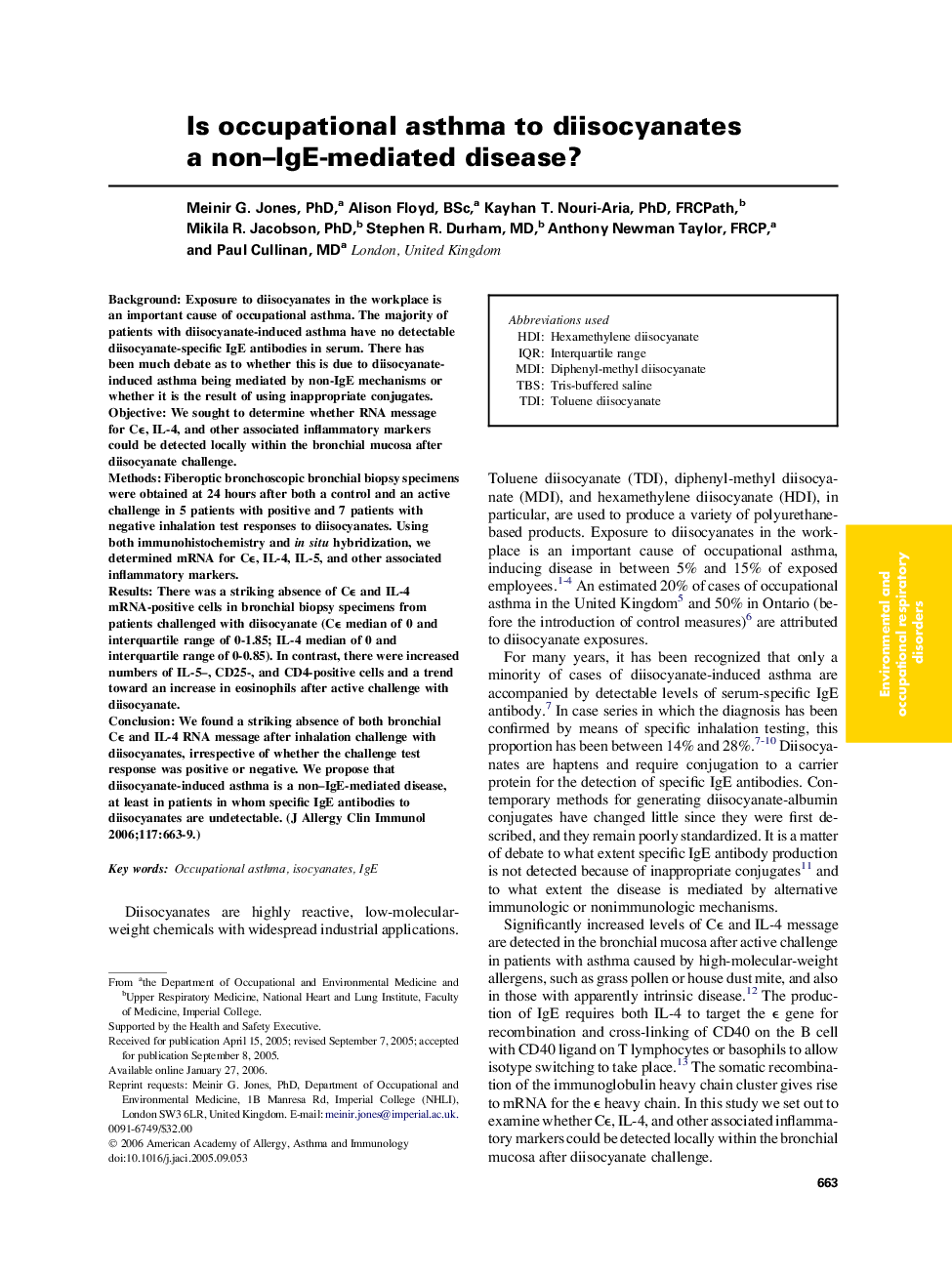| Article ID | Journal | Published Year | Pages | File Type |
|---|---|---|---|---|
| 3203779 | Journal of Allergy and Clinical Immunology | 2006 | 7 Pages |
BackgroundExposure to diisocyanates in the workplace is an important cause of occupational asthma. The majority of patients with diisocyanate-induced asthma have no detectable diisocyanate-specific IgE antibodies in serum. There has been much debate as to whether this is due to diisocyanate-induced asthma being mediated by non-IgE mechanisms or whether it is the result of using inappropriate conjugates.ObjectiveWe sought to determine whether RNA message for Cε, IL-4, and other associated inflammatory markers could be detected locally within the bronchial mucosa after diisocyanate challenge.MethodsFiberoptic bronchoscopic bronchial biopsy specimens were obtained at 24 hours after both a control and an active challenge in 5 patients with positive and 7 patients with negative inhalation test responses to diisocyanates. Using both immunohistochemistry and in situ hybridization, we determined mRNA for Cε, IL-4, IL-5, and other associated inflammatory markers.ResultsThere was a striking absence of Cε and IL-4 mRNA-positive cells in bronchial biopsy specimens from patients challenged with diisocyanate (Cε median of 0 and interquartile range of 0-1.85; IL-4 median of 0 and interquartile range of 0-0.85). In contrast, there were increased numbers of IL-5–, CD25-, and CD4-positive cells and a trend toward an increase in eosinophils after active challenge with diisocyanate.ConclusionWe found a striking absence of both bronchial Cε and IL-4 RNA message after inhalation challenge with diisocyanates, irrespective of whether the challenge test response was positive or negative. We propose that diisocyanate-induced asthma is a non–IgE-mediated disease, at least in patients in whom specific IgE antibodies to diisocyanates are undetectable.
